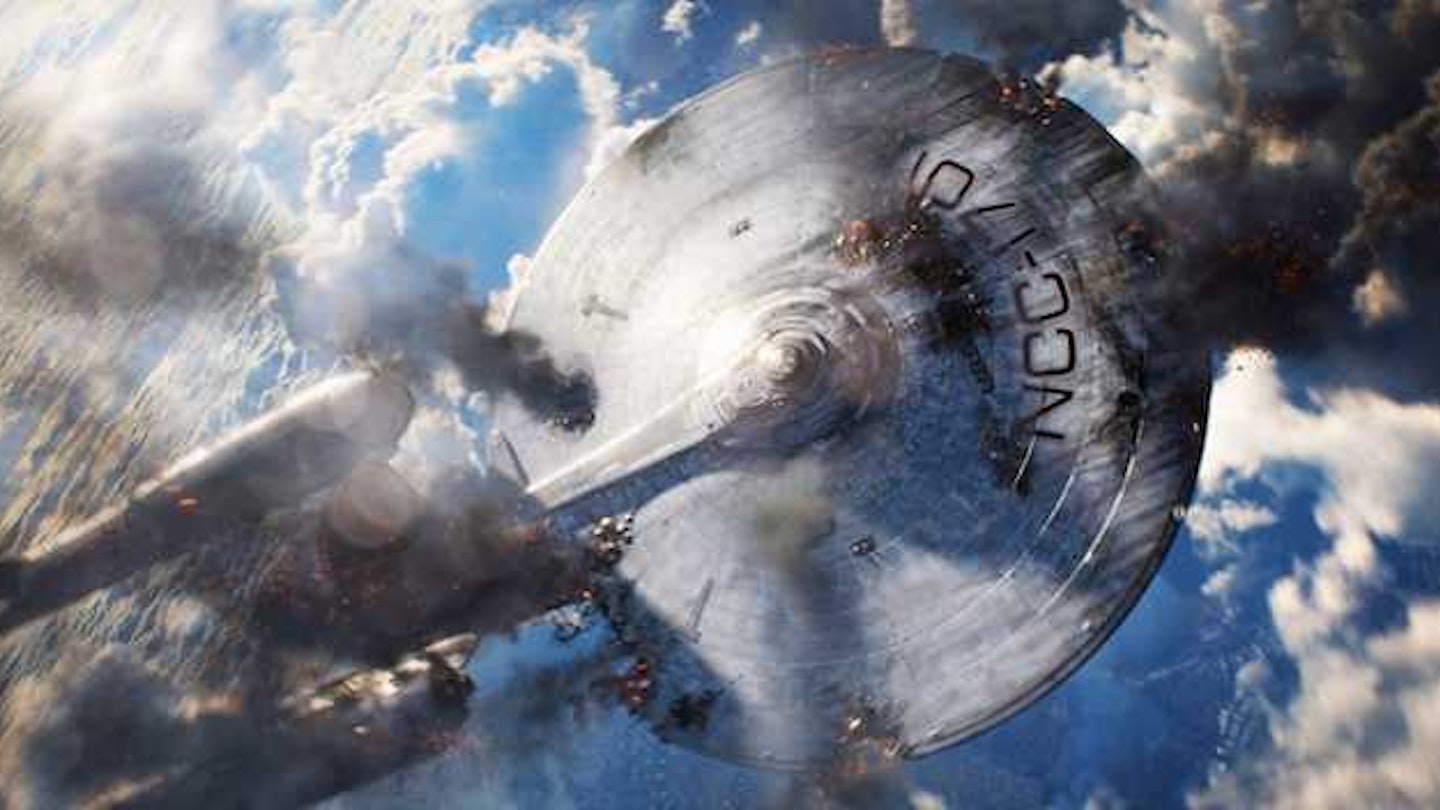The first original Star Trek tie-in novel (i.e. not the novelisation of an existing episode) was Spock Must Die! by sci-fi legend James Blish, published in 1970. Since then there have been hundreds of Trek books, expanding the canon into new adventures for the TV and film crews, and characters we’ve never met off the printed page. In many ways, Star Trek's expanded universe set the model for the others that followed. To detail every single story would be the work of an encyclopaedia, and obviously there are tonnes of Original Series, Next Generation, Deep Space Nine, Voyager and Enterprise novels. But with J.J. Abrams boldly going Into Darkness this week, here’s a guide to the multi-part spin-off series you might not be so familiar with…
For more extended universe explorations, read about James Bond's Literary Afterlife here and The Indiana Jones Novels here.
Star Trek: Vanguard
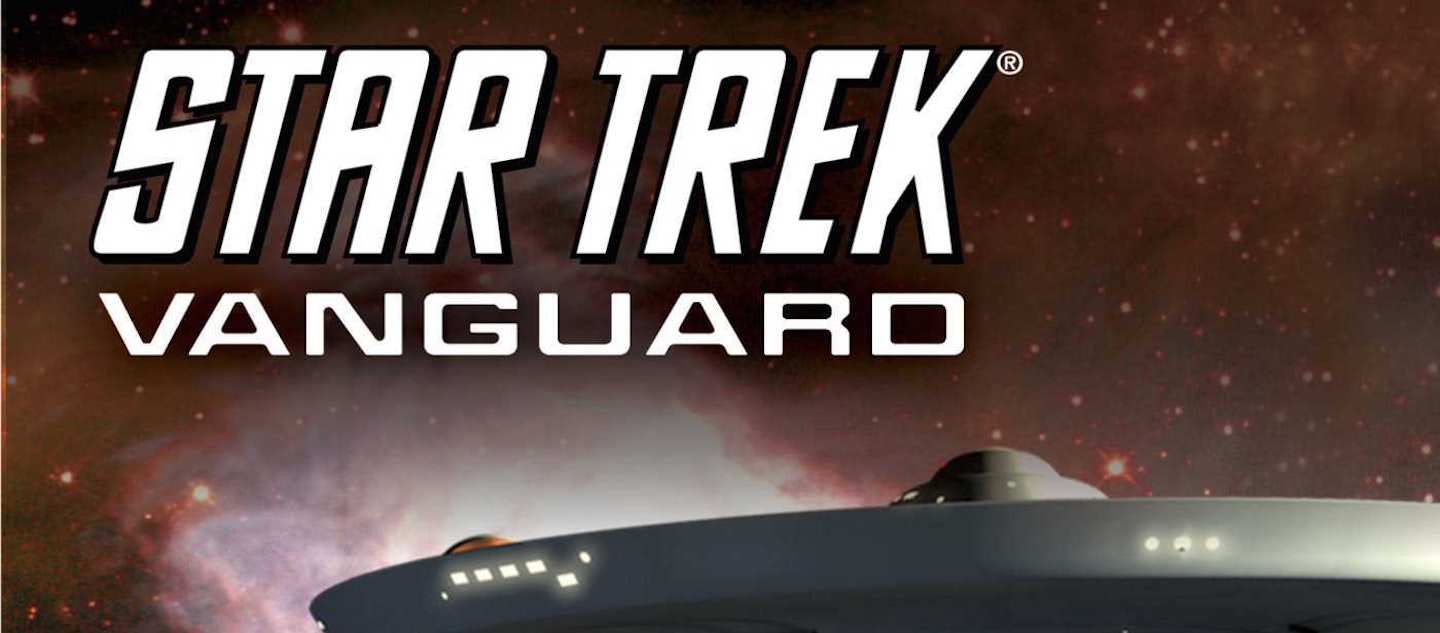
Stardate: During the original series.
Familiar faces: Captain Kirk and his Enterprise crew; Carol Marcus; Admiral Nogura; Chancellor Gorkon (just a Councillor at this point).
Mission: Set during the original five-year mission, the eight-volume Vanguard takes place in the remote Taurus Reach of the Alpha Quadrant. The series’ title refers to Starbase 47, and the overarching plot involves political ructions between Starfleet, the Tholians, the Orions, the Klingons and the Romulans over the discovery of an ancient and mysterious genome. Kirk and his crew show up in the first volume, Harbinger, but after that it’s a hand-over to the Vanguard crew, which includes Commanding Officer Diego Reyes, Vulcan intelligence officer T’Prynn, and archaeologist Ming Xiong. Also important is Tim Pennington, a dogged journalist. He’ll later give his name to the Pennington School, which Jake Sisko considers attending during Deep Space Nine. That’s what we call a ret-con.
If you only read one: Harbinger, by David Mack. You’ll be lost if you don’t start at the beginning.
Star Trek: New Earth
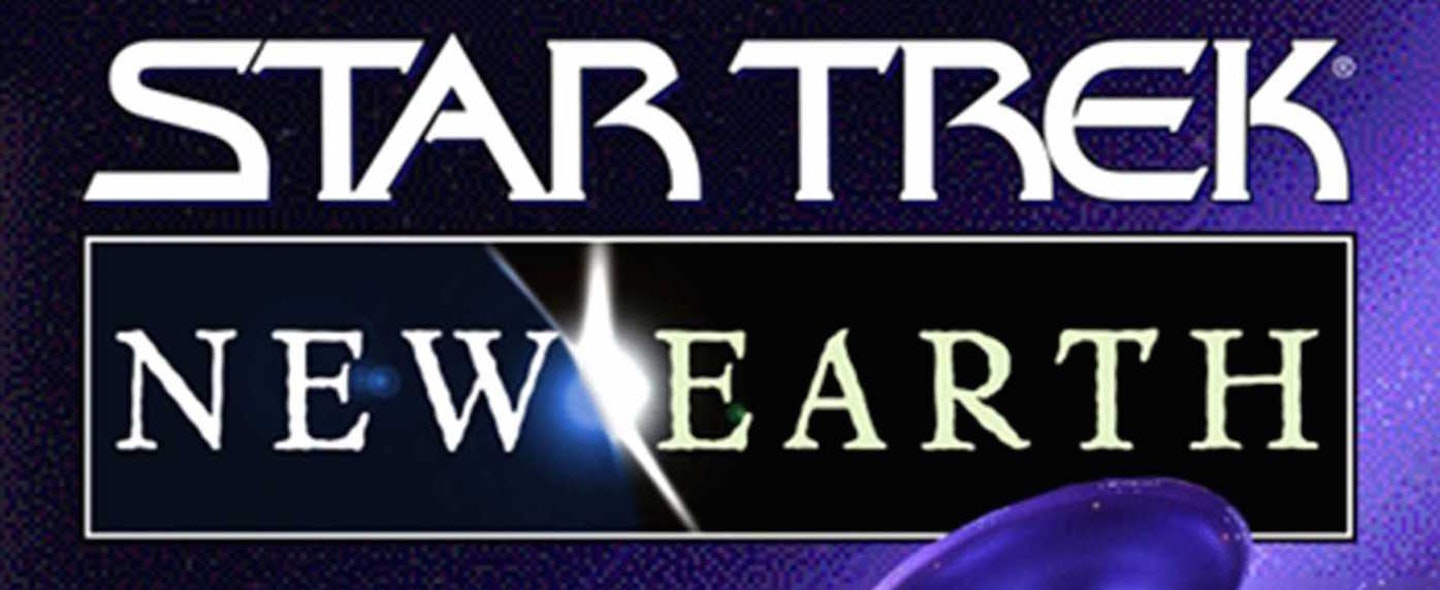
Stardate: After the original series.
Familiar faces: Original Enterprise crew.
Mission: A second five-year mission, set after The Motion Picture and before The Wrath of Khan. Rather than general exploration, the Enterprise here is acting as escort to a group of colonists en-route to a freshly-discovered M-Class planet: a habitable New Earth, christened Belle Terre. They get there quite quickly – in book two – but the settlers then need help surviving: dealing with harsh conditions and fending off new aliens, who take umbrage at Starfleet arriving to take their jobs and their planets. On the eventual departure of the Enterprise in book 6, a new ship, Challenger, is built from the wreckage of others to take over Belle Terre’s defence, under the aegis of newbie Commander Nick Keller. New Earth was supposed to morph into a Challenger-focused series at this point, but barring a couple of entries in the crossover Gateways mini-series, this never really happened.
If you only read one: Rough Trails, by L.A. Graf, which might be subtitled The Search For Chekhov, but isn’t.
Star Trek: The Lost Era
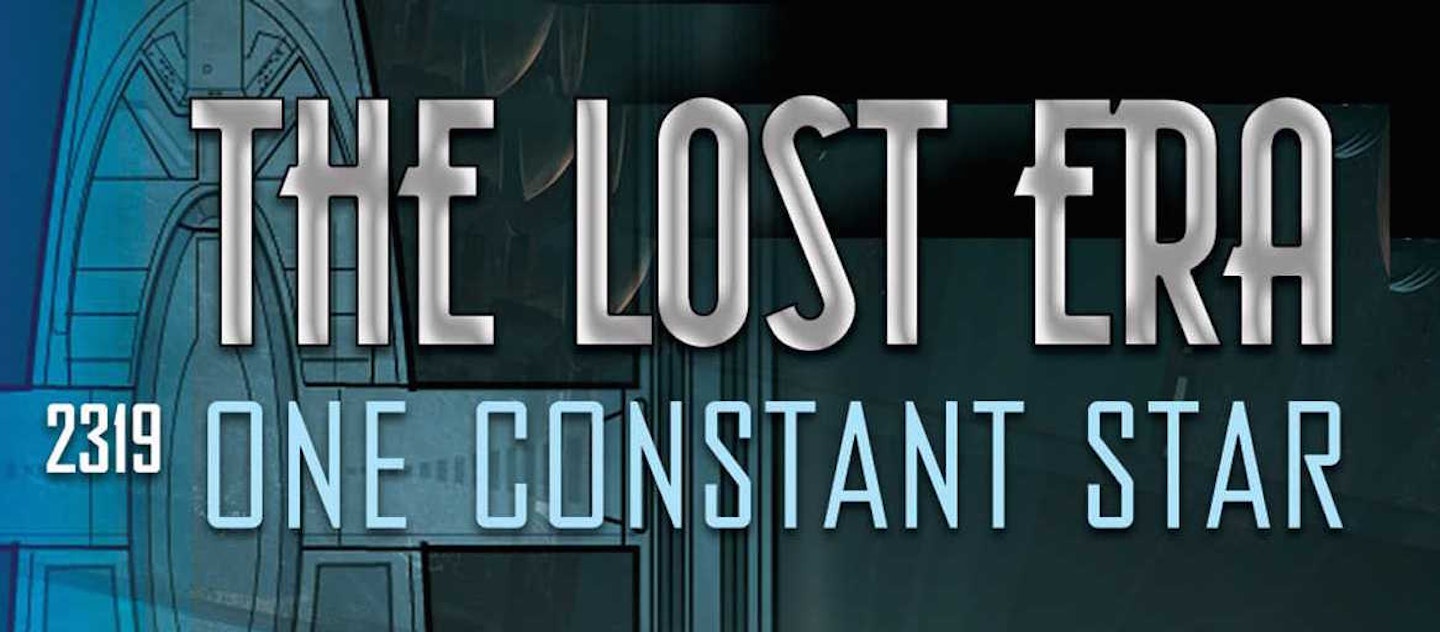
Stardate: Between Generations and The Next Generation.
Familiar faces: Various from The Original Series, The Next Generation, Deep Space Nine and Voyager.
Mission: No real overarching theme here: just a random assembly of what was happening to familiar characters after we left them or before we met them. This means Sulu is on the Excelsior; Riker on the Pegasus; Picard between the Stargazer and the Enterprise; and Uhura, Sisko, Tuvok and Beverley Crusher working as a super-team on Romulus (apparently it's a small universe). Meanwhile, we see Bajor before Starfleet arrived, when DS9 was Terok Nor and the planet was under Cardassian occupation. There’s even a novel, Serpents Among The Ruins, about John Harriman, the dorky new captain of the Enterprise from Generations.
If you only read one: Forged In Fire, by Michael A Martin and Andy Mangels. It’s a generation-spanning continuity-fest, plugging the gap of Sulu’s taking command of the Excelsior pre-The Undiscovered Country, and simultaneously serving as a prequel to the 2nd season DS9 episode Blood Oath. Phew! It also explains the difference between the Trills in The Next Generaiton and Deep Space Nine, because we needed to know. On hand with Sulu are Curzon Dax, the Klingon triumvirate of Kor, Koloth and Kang, and Captain Styles from The Search For Spock.
Star Trek: Stargazer
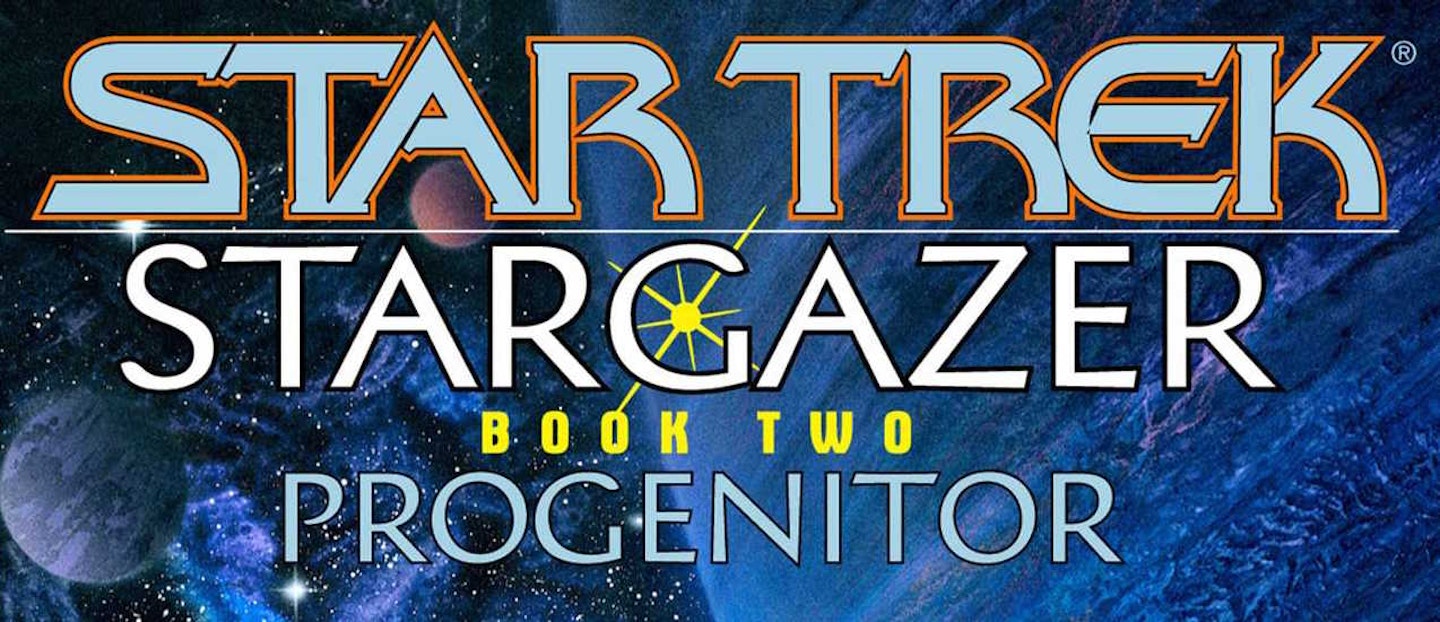
Stardate: Before The Next Generation.
Familiar faces: Jean Luc Picard, Jack Crusher, Guinan, Enabran Tain.
Mission: More Lost Era adventure, this series sees Picard on his pre-Enterprise gig as Captain of the Stargazer, and is a spin-off from the Next Generation novel The Valiant. Adventures include facing down a pirate called The White Wolf; mirror-universe shenanigans with Montgomery Scott and war with intergalactic xenophobes the Ubarrak. Most interesting among the previously unseen crew is Jack Crusher, father of Wesley and husband of Beverley... although he doesn’t last long.
If you only read one: Oblivion, by Michael Jan Friedman, details the back-story to the relationship between Picard and Next Generation’s Guinan, hinted at but never explained on TV. The book also stars a young Enabran Tain, a Cardassian character significant in Deep Space Nine.
Star Trek: New Frontier
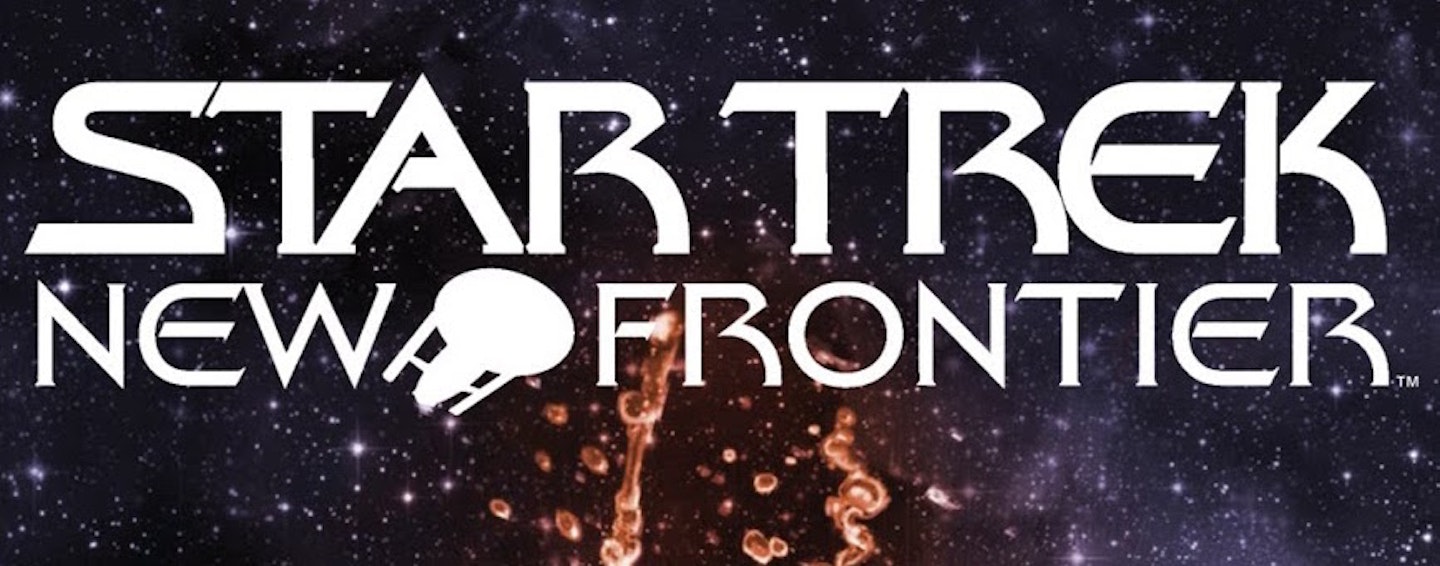
Stardate: Same time as The Next Generation, Deep Space Nine and Voyager.
Familiar faces: Elizabeth Shelby, Selar, Robin Lefler.
Mission: The first series of Trek novels to be unconnected to a TV series, New Frontier takes some original characters, some bit-players from The Next Generation, and some leftovers from the kids’ novel series Starfleet Academy, and flings them into Sector 221-G to deal with the collapsing Thallonian empire. Handpicked by Picard (natch), the captain of the Excalibur (our Enterprise cipher) is one Mackenzie Calhoun, and if we don’t know him from Adam, we might at least recognise Commander Shelby and Vulcan medical officer Selar. Shelby later gets her own command, on the Trident.
If you only read one: The relatively recent Treason (by Peter David, as are they all) is a good jumping-on point: it’s a bit of a reboot and revolves around Selar.
Star Trek: Corps Of Engineers

Stardate: Largely after Deep Space Nine.
Familiar faces: Montgomery Scott, Sonya Gomez, Kieran Duffy, various.
Mission: The ongoing adventures of the grunts that work in Engineering may not be the most immediately thrilling-sounding prospect, but Starfleet Corps Of Engineers (which later dropped the "Starfleet" bit of that title) ran to more than seventy volumes. They were exclusively e-books to start with, but have since been collected in paperbacks. Like New Frontier, Corps Of Engineers mixes new characters with bit-players from TV, in a set-up that has a special engineering team sent to do the jobs that are above and beyond what a general ship’s crew can handle. Montgomery "Scottie" Scott is their liaison. The Corps are based on the USS Da Vinci, under print-only captain David Gold. Among his crew is Sonya Gomez. Trivia fans might enjoy the fact that Gomez appeared in a couple of episodes of The Next Generation played by Lycia Naff, who was also the three-breasted hooker in Total Recall.
If you only read one: Fables Of The Prime Directive by Cory Rushton. It has a cannibal Vorta, and one of those Iotian aliens that talk like ‘30s Earth gangsters. That’s reason enough, surely.
Star Trek: Deep Space Nine – Season Eight
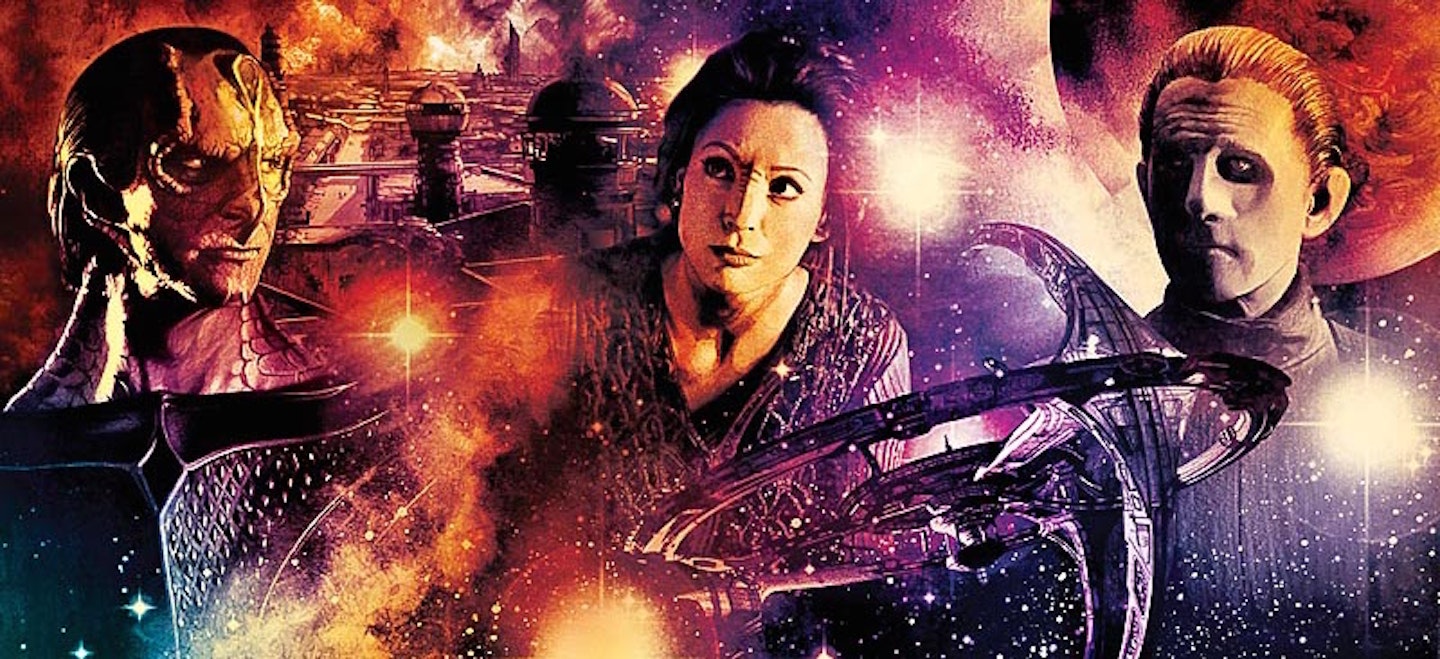
Stardate: After Deep Space Nine.
Familiar faces: Various DS9 cast.
Mission: Okay, we said we wouldn’t cover the direct TV spin-off novels, but these deserve a mention because they’re really rather good. Never officially collected as an eighth season, the post-TV DS9 novels nevertheless boldly went in directions that were both consistent with the series and bravely independent, with Kira taking over the station in Sisko’s absence. Her fellow Bajoran and ex-Maquis rebel Ro Laren is drafted in to cause constant friction as security chief. A few of the series’ cast even wrote entries of their own: Andrew Robinson provided a volume on the early life of the Machiavellian Cardassian Elim Garak (A Stitch In Time); Armin Shimmerman penned a Quark romp in The 34th Rule; and J.G. Hertzler wrote a two-volume Klingon epic centred on his character Martok (The Left Hand Of Destiny).
If you only read one: The aforementioned A Stitch In Time, by Andrew J. Robinson. Essentially Garak's autobiography, it grew from self-penned "diary entries" that Robinson used to read on stage at Trek conventions. It's structured as a long letter Garak has written to Julian Bashir from Cardassia, having finally returned there after his long exile on the former Terok Nor.
Star Trek: Titan
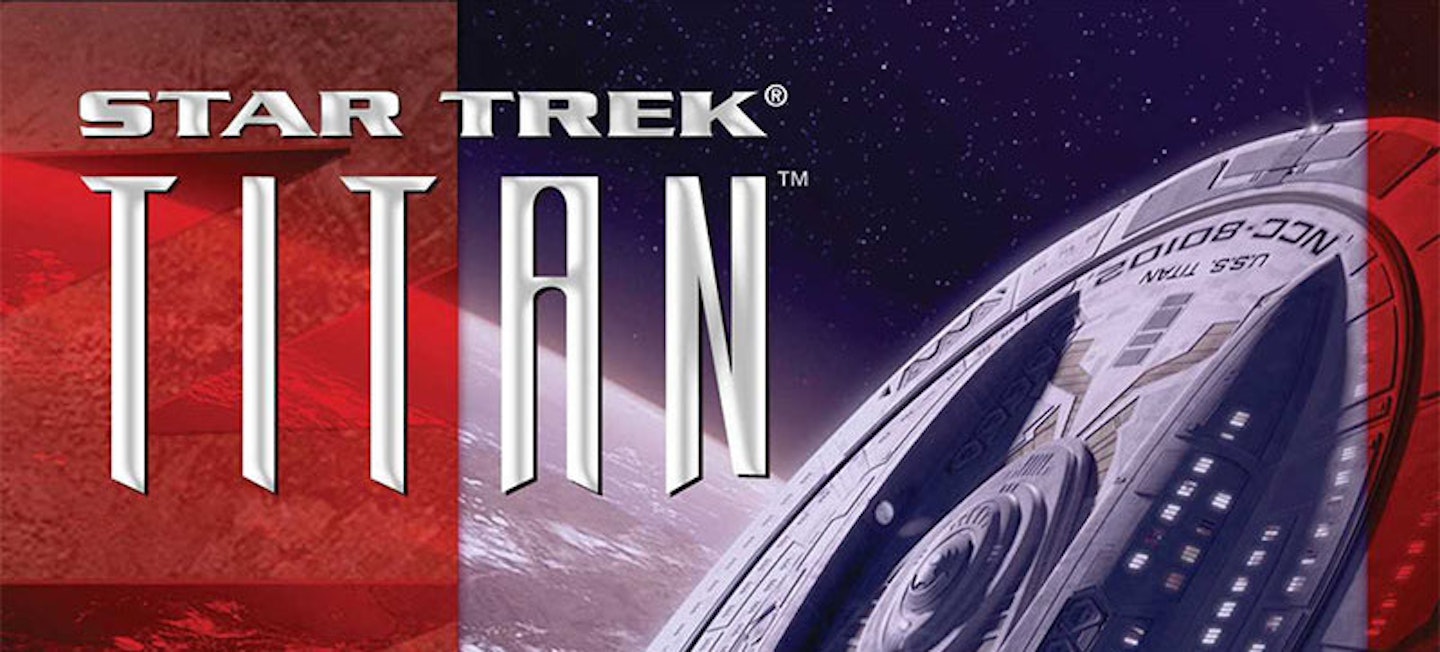
Stardate: After Nemesis.
Familiar faces: William Riker, Deanna Troi, Tuvok.
Mission: If you weren’t too busy gagging on your popcorn at the end of Nemesis, you’ll know that Riker finally got his own command. Here’s what happened next, as he seeks out new life and new civilisations from the bridge of the USS Titan, with Voyager’s Vulcan Tuvok as his Second Officer, and his missus Deanna Troi as, natch, Diplomatic Officer and ship’s counsellor. Titan’s first mission was to prevent civil war in the Romulan Star Empire after Shinzon’s shenanigans. Subsequent adventures took in the likes of interstellar whalers and sentient machines. We should also mention the massive Borg-invasion crossover epic Destiny, of which the Titan crew is a part, and the repercussions of which are still ongoing.
If you only read one: Destiny aside, go for the ocean planet drama of Over A Torrent Sea, by the always excellent Christopher L. Bennett.
Star Trek: Klingon Empire
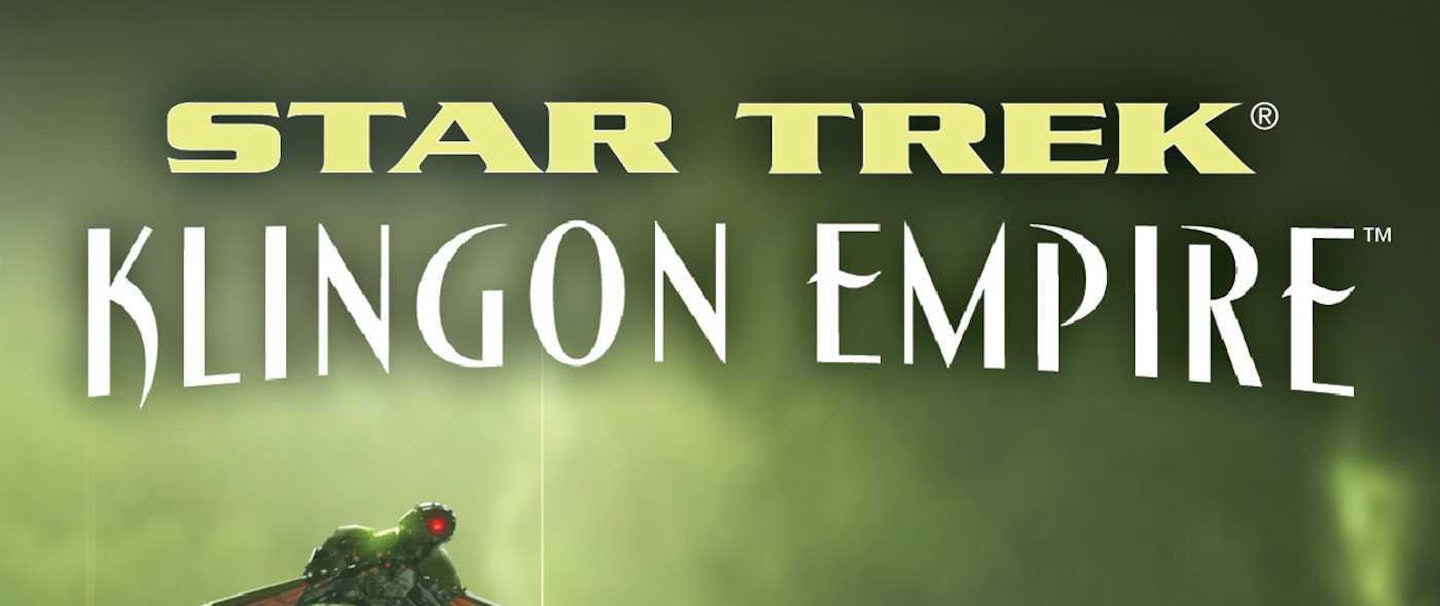
Stardate: Deep Space Nine-era.
Familiar faces: None.
Mission: The vast majority of Star Trek expanded universe novels are Starfleet-centric, so this series, written solely by Keith R.A. De Candido, is unusual in focusing entirely on the Klingons. Initially a series about the crew of the IKS Gorkon ("To explore strange new worlds, to seek out new life and new civilisations... and to conquer them for the glory of the Klingon empire!") it expanded to take in the entire Klingon culture in the fourth book. Sadly, there was never a book five. The series fleshed out a Klingon underclass both in the inner cities and rural communities of home planet Kronos, whilst also taking in higher-level political intrigues and the High Council. We even learn something about the Klingon medical establishment through the interesting Doctor B’Oraq.
If you only read one: Burning House is the one that expands the format, and sees the crew of the Gorkon on shore leave on Kronos.
Star Trek: Department Of Temporal Investigations
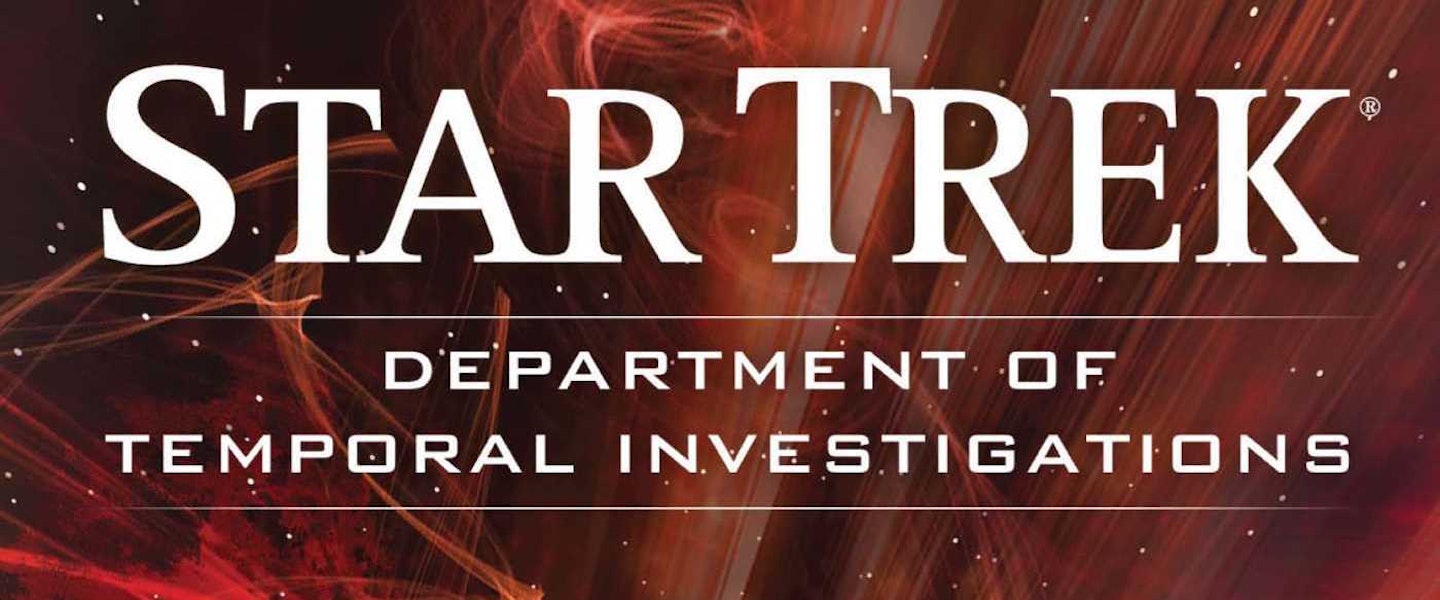
Stardate: Post-all TV and films.
Familiar faces: Dulmer and Lucsly, from Deep Space Nine episode Trials And Tribbleations.
Mission: This is mind-bending Trek esoterica, but serious fun for the dedicated (although it’s not quite the flat-out comedy that a sort of Star Trek: Time Bandits could have been). This series, riffing on the idea of the titular Starfleet sub-division encountered in a single DS9 episode, sees temporal agents grappling with time violations, distortions and paradoxes caused in the pursuit of Starfleet’s everyday agenda. Practically every Trek episode that has involved time in any way gets a mention in the two novels published to date, and many of the characters from those episodes show up for extended service. Principal players are Dulmer and Lucsly (no prize for solving the anagrams), whose back-story is developed and who have to deal with interfering future members of their own department, as well as "current" issues. As they mentioned on TV, they really hate Captain Kirk. He makes a lot of work for them. Still.
If you only read one: There are only two so far, written by Christopher L. Bennett. Read ‘em both.
Star Trek: Typhon Pact

Stardate: After the Destiny novels.
Familiar faces: Many and various.
Mission: A crossover "season", Typhon Pact follows the Destiny arc (see Titan), and does a similar job of mixing old and new crews and characters in the time following their canonical screen adventures. The titular pact is formed in opposition to the Federation, and boasts the Romulans, Breen, Tholians, Gorn, Tzenkethi and Kinshaya as its signatories. It’s the anti-Federation, if you like: a sort of Warsaw Pact to the Federation's NATO. It seems extraordinary that nobody thought of doing that before.
If you only read one: Best to start at the beginning with Zero Sum Game (David Mack), which is an espionage thriller along Star-Trek-does-Firefox lines. But you could probably do with reading the Destiny trilogy (Mack again) and A Singular Destiny (Keith R.A. De Candido) first.
The Shatnerverse

Stardate: Post-Generations.
Familiar faces: Captain James Tiberius Kirk!
Mission: J.J. Abrams has branched off into his own timestream with the recent films, but he wasn’t the first to do so. William Shatner’s own novels ("co-written" with Judith and Garfield Reeves-Stevens) were so problematic for general continuity that they have been shunted by fandom into an alternate timeline and affectionately dubbed The Shatnerverse. The books are, of course, the continuing missions of Captain Kirk, after the events of Generations. And yes, we know what happened in Generations. Apparently this stuck in Shatner’s craw a little bit. In the first book here, The Ashes Of Eden, Spock goes to Veridian III to pay his respects to his old friend, and finds... an empty grave! OMG!
If you only read one: It has to be The Return, in which Kirk is reanimated by an alliance of the Borg and the Romulans. No, really!
